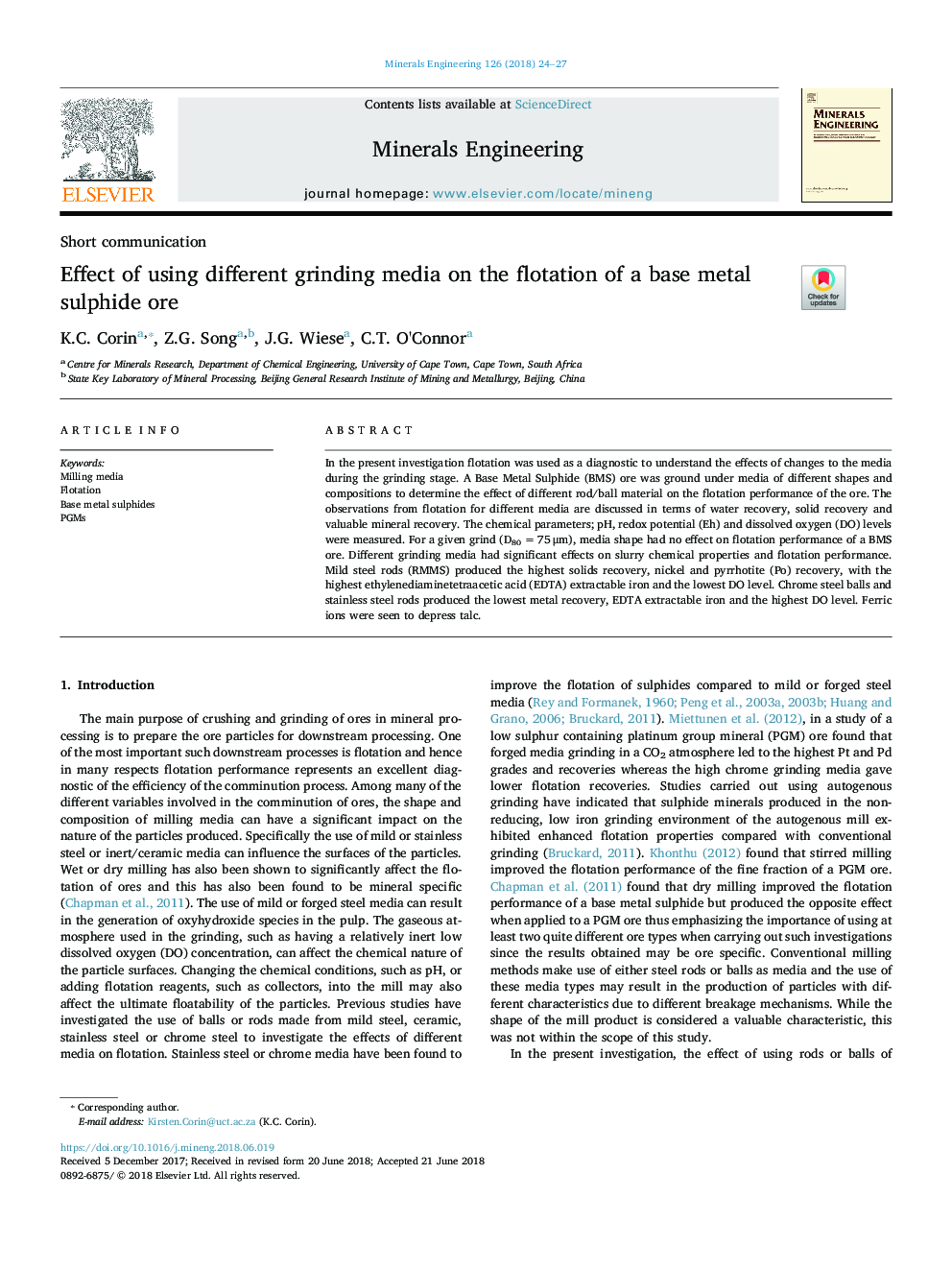| Article ID | Journal | Published Year | Pages | File Type |
|---|---|---|---|---|
| 6672163 | Minerals Engineering | 2018 | 4 Pages |
Abstract
In the present investigation flotation was used as a diagnostic to understand the effects of changes to the media during the grinding stage. A Base Metal Sulphide (BMS) ore was ground under media of different shapes and compositions to determine the effect of different rod/ball material on the flotation performance of the ore. The observations from flotation for different media are discussed in terms of water recovery, solid recovery and valuable mineral recovery. The chemical parameters; pH, redox potential (Eh) and dissolved oxygen (DO) levels were measured. For a given grind (D80â¯=â¯75â¯Î¼m), media shape had no effect on flotation performance of a BMS ore. Different grinding media had significant effects on slurry chemical properties and flotation performance. Mild steel rods (RMMS) produced the highest solids recovery, nickel and pyrrhotite (Po) recovery, with the highest ethylenediaminetetraacetic acid (EDTA) extractable iron and the lowest DO level. Chrome steel balls and stainless steel rods produced the lowest metal recovery, EDTA extractable iron and the highest DO level. Ferric ions were seen to depress talc.
Keywords
Related Topics
Physical Sciences and Engineering
Chemical Engineering
Chemical Engineering (General)
Authors
K.C. Corin, Z.G. Song, J.G. Wiese, C.T. O'Connor,
